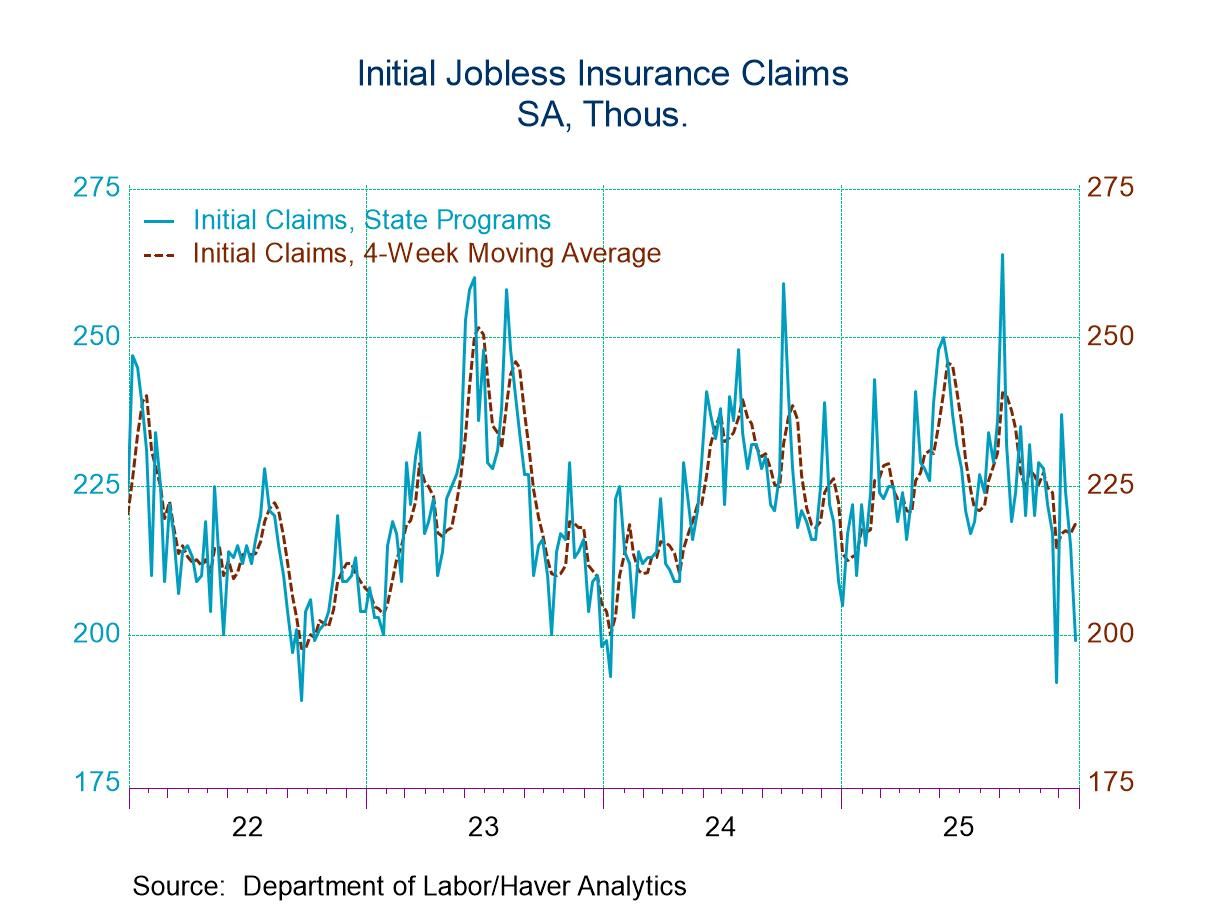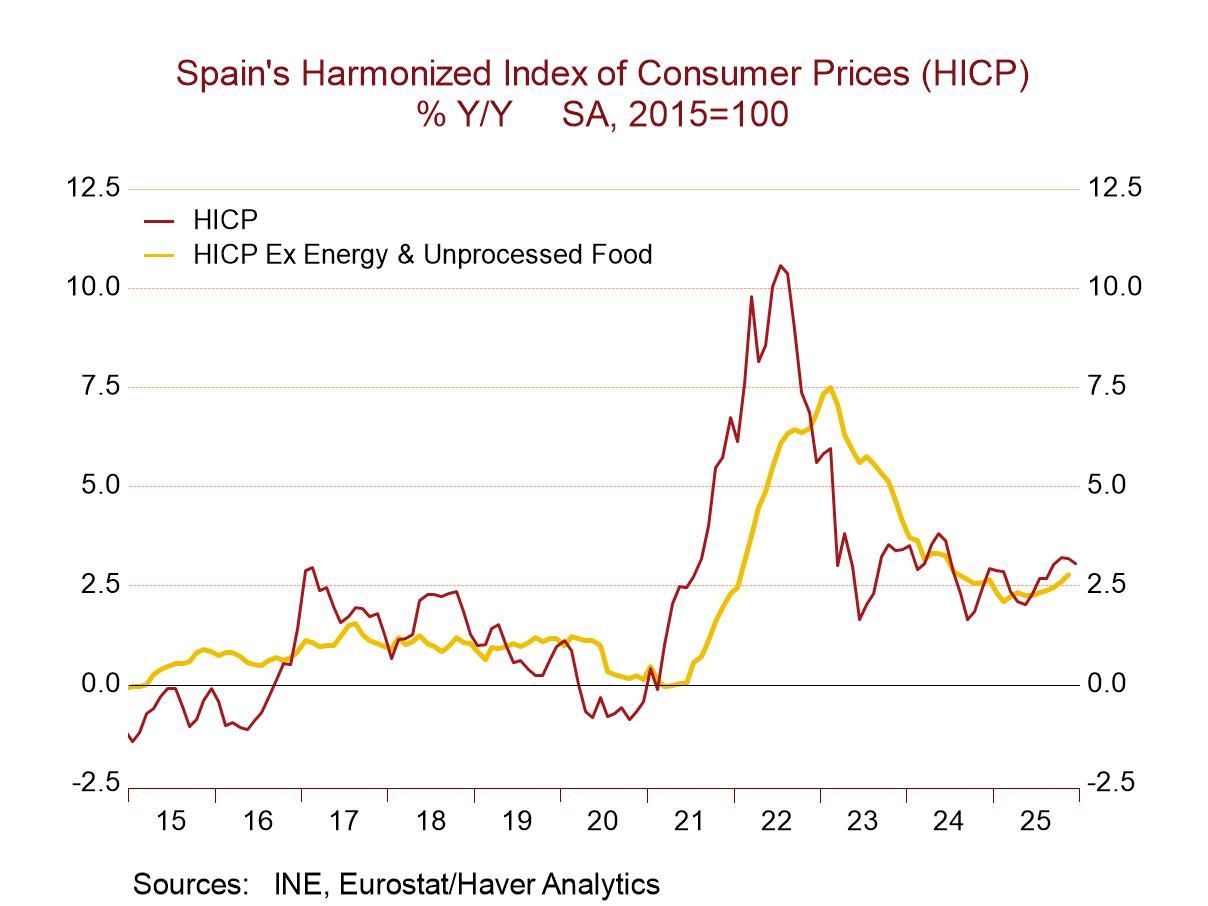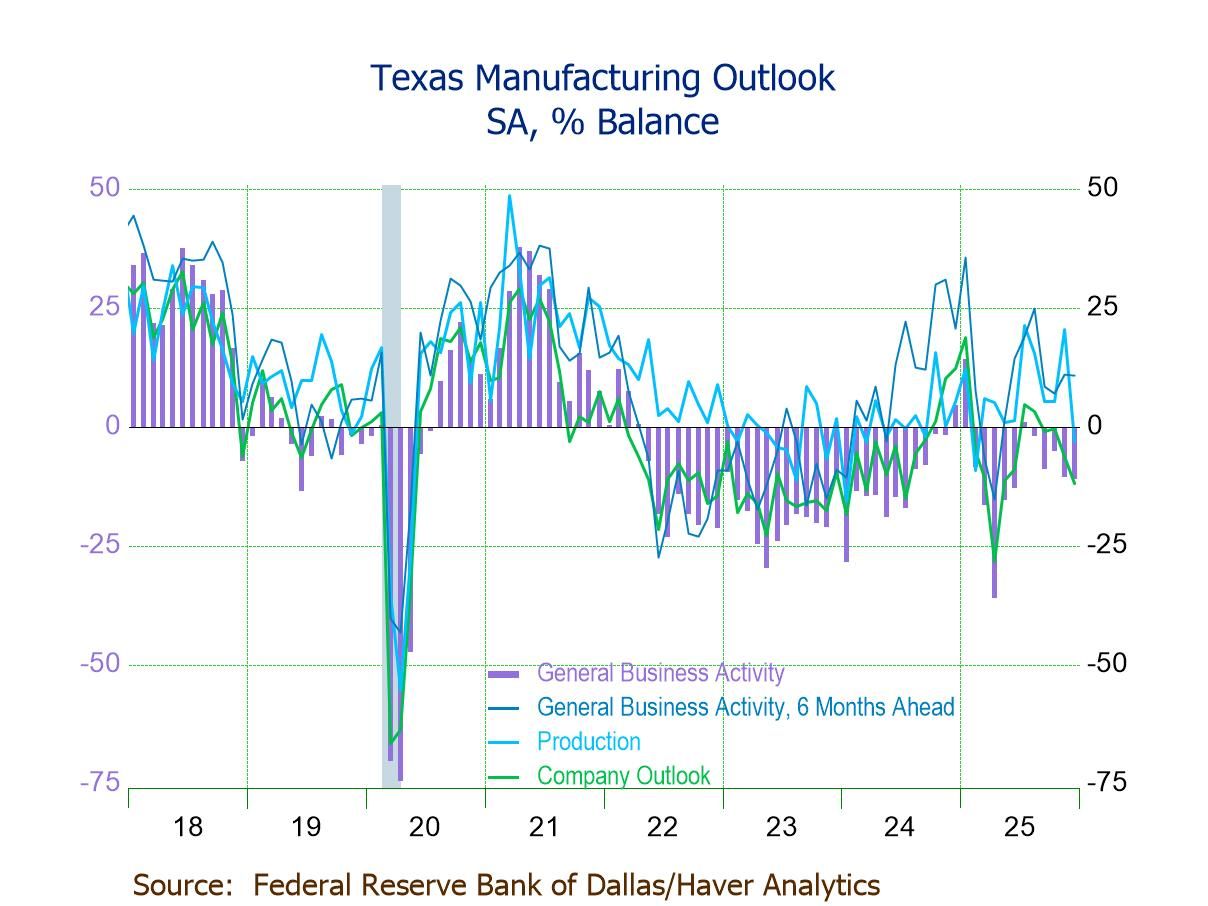 Global| Oct 10 2024
Global| Oct 10 2024Charts of the Week: Fed Up with Surprises
by:Andrew Cates
|in:Economy in Brief
Summary
Last week’s stronger-than-expected US employment report have combined with some comments from FOMC members suggesting the Fed may be in no great hurry to reduce interest rates next year to generate a big repricing in financial markets over the past few days (see chart 1). Geopolitical uncertainty in the Middle East and its impact on supply chains have additionally been a key focus for many investors (chart 2). The outlook for China is also being more actively debated in light of recent policy initiatives designed to shore up the economy (chart 3). The plight of the euro area, and Germany in particular, is equally causing some concern (chart 4). All that said, the incoming survey data this week have offered some reassurance to those that are anticipating a soft landing for the world economy in the coming months (chart 5). That message was implicit too from the latest Blue Chip Survey of Economic Forecasters (chart 6).
US growth surprises and Fed policy Expectations of upcoming Fed rate cuts have been scaled back markedly over the past two weeks. On September 27, for example, the fed funds futures market looked for US policy rates to fall to 4.275% by the end of this year (the current target is 4.875%). That is, it expected another 60bps of FFR cuts at the remaining two FOMC meetings this year. Now, this market is anticipating only 38 bps of rate cuts at these two meetings. That repricing has been triggered by a bout of stronger-than-expected US dataflow and last week’s employment report for September in particular (see chart 1 below).
Chart 1: US Citigroup growth surprise index versus 2-year Treasury yields

Supply chain pressures Global equity markets have, on the whole, tended to respond favourably to these positive US surprises largely because inflation has remained in check and most central banks are still on course to ease monetary policy in the coming months. There are several risks to this narrative, however, one of which concerns geopolitical tensions in the Middle East and their impact on global supply chains. An index calculated by the New York Fed suggests that global supply chain pressures have lately risen and are now above historical averages. As chart 3 below also suggests, that index has served as a useful leading indicator of upstream price pressures in recent years and certainly points to more elevated rates of producer price inflation in coming months, albeit from relatively depressed levels at present.
Chart 2: Global supply chain pressures versus PPI inflation in advanced economies

The consensus for China’s economic outlook Against the backdrop of recently announced policy easing measures, the latest Blue Chip survey of economic forecasters reveals some heightened optimism about China’s economic outlook. That survey, for example, yielded a small increase to the consensus growth projection for 2024, to 4.8% in October, up from 4.7% in September. Expectations for growth in 2025 also improved, and now stand at 4.4%, compared to the previous forecast of 4.3%. All that said, the economic situation in China remains uncertain, with recent data indicating an uneven recovery and the impact of newly announced policy easing initiatives yet to materialize. There are certainly many doubts, at present, about the country’s ability to achieve its 5% growth target for this year.
Chart 3: The evolution of the Blue Chip consensus for China’s GDP growth and inflation in 2024

Electricity prices in the US versus Germany A sluggish Chinese economy tends to generate ripple effects for other economies that have high underlying trade and/or financial exposures. Germany is a good example because China is a major export market. But Germany’s economy has been struggling for other reasons as well, including its high dependence on Russian energy. It is certainly of note that Germany’s electricity prices remain highly elevated at present compared with most major European economies as well as compared with the US (see chart 4 below). Given Germany's large manufacturing sector, which is highly energy-intensive, this has led to substantial cost pressures, reduced profitability, and a broader impact on economic activity.
Chart 4: Electricity prices in Germany and the US

The global economic cycle On a brighter note this week’s sentix surveys revealed greater confidence from investors about the global economic outlook. Both the current situation balance and the more forward looking expectations balance improved in October to four month highs (chart 5). This improvement can likely be attributed to the easing cycles that have been initiated by several central banks, and most notably the US Fed, in recent weeks.
Chart 5: The sentix surveys: global current situation balance versus expectations

The Blue Chip growth consensus for 2025 That aforementioned Blue Chip survey for October also reveals high confidence among economic forecasters that the world economy will experience a soft landing in the months ahead. Although GDP forecasts for 2025 for the euro area were downgraded by a fraction, the outlook for other big economies, was either left unchanged or, in the case of the US, improved. As noted above, moreover, the consensus GDP forecast for China was also increased a little. While the anticipated levels of GDP growth are subdued in many cases, they remain respectable, and are inconsistent with a hard landing scenario for the global economy.
Chart 6: The Blue Chip Consensus: Growth expectations for 2025

Andrew Cates
AuthorMore in Author Profile »Andy Cates joined Haver Analytics as a Senior Economist in 2020. Andy has more than 25 years of experience forecasting the global economic outlook and in assessing the implications for policy settings and financial markets. He has held various senior positions in London in a number of Investment Banks including as Head of Developed Markets Economics at Nomura and as Chief Eurozone Economist at RBS. These followed a spell of 21 years as Senior International Economist at UBS, 5 of which were spent in Singapore. Prior to his time in financial services Andy was a UK economist at HM Treasury in London holding positions in the domestic forecasting and macroeconomic modelling units. He has a BA in Economics from the University of York and an MSc in Economics and Econometrics from the University of Southampton.






